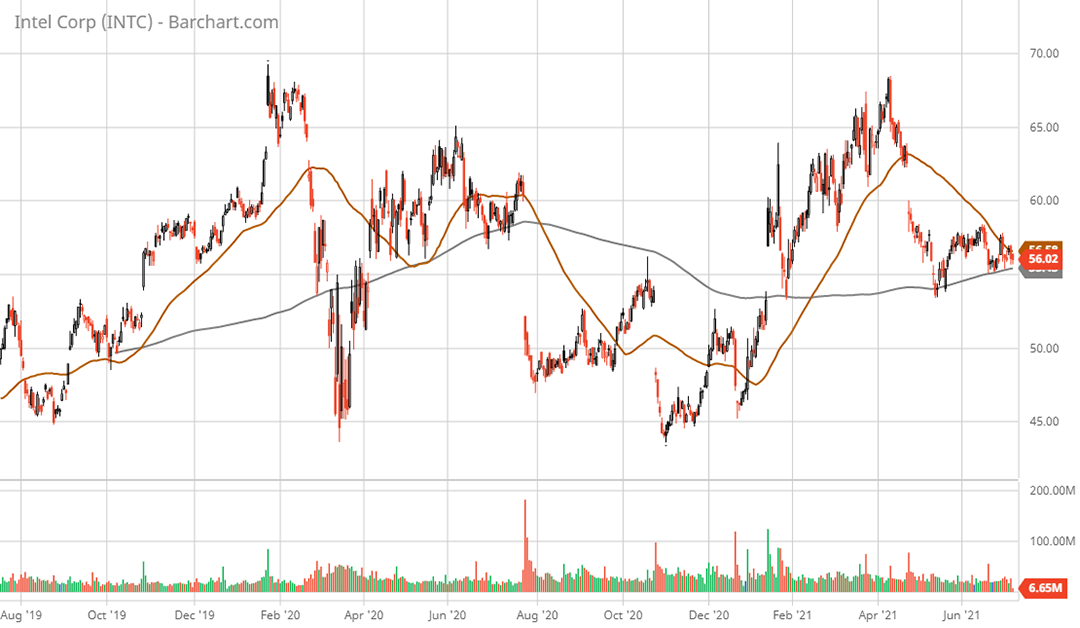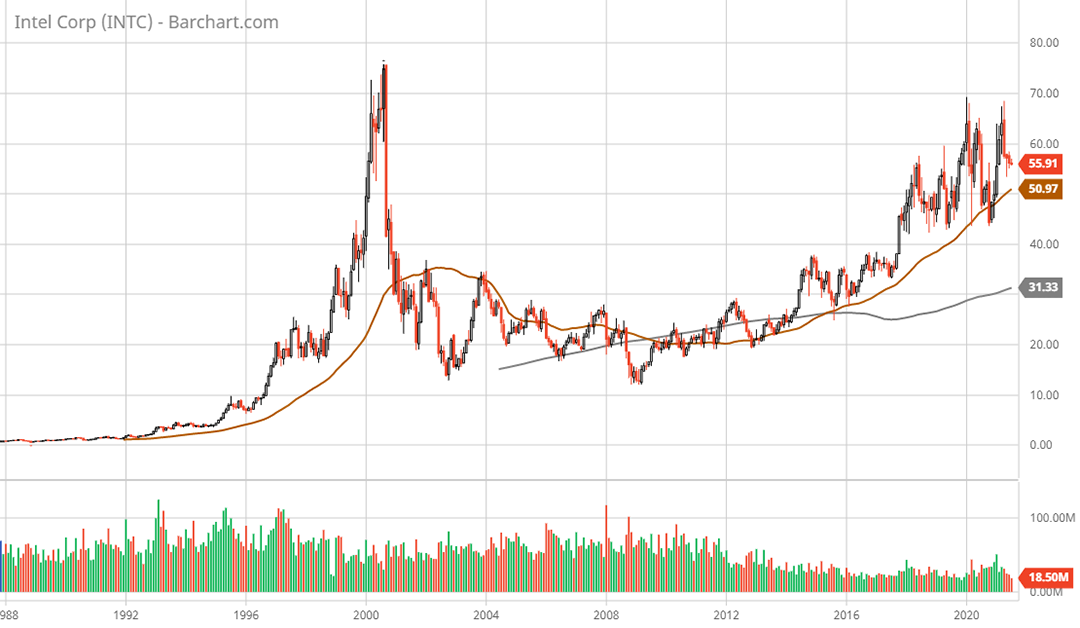Risk/Reward Rating: Positive
Intel recently announced an ambitious growth plan and a recommitment to its integrated device manufacturing (IDM) business model. Under new CEO Pat Gelsinger, Intel has unveiled plans to invest $20 billion to build two new semiconductor fabs in Arizona to accelerate this new IDM 2.0 strategy. This will enable Intel to continue to build the majority of its products in Intel fabs providing a competitive advantage in an age of constrained semiconductor supply and geopolitical tensions.
The COVID crisis and resulting supply chain disruptions highlighted the strategic business value of supply chain control and flexibility going forward. The new fabs will allow Intel to offer world-class foundry services to industry participants. When combined with Intel’s in house needs, this will enable Intel to maximize utilization and efficiency of the new plants. Additionally, Intel will continue to utilize and grow the use of third-party foundries enabling diverse and agile product capabilities.
Intel has had its fair share of product roadmap missteps in recent times as evidenced by the delayed transition to 7nm technology. With new leadership and a sharpened focus on executing within the short- and long-term strategic plans, Intel has the necessary assets and resources to take a leadership role once again in the semiconductor space. The current valuation of the company embeds low expectations for success in returning the company to a leadership position and growth trajectory.
Valuation: 12x 2021 and 2022 earnings estimates with a 2.5% dividend yield. The valuation is a fraction of the current market multiple, which stands at 23x to 32x expected earnings. Intel’s valuation is also at a discount to historic stock market multiples. All told, low expectations are evident in the current share price allowing room for positive surprises.
The turnaround plan should get a kicker from the renewed focus in the United States to onshore critical manufacturing and supply chain capabilities on national security grounds. Intel is ideally positioned to benefit from these US manufacturing incentives which will lower the risk and capital cost of the company’s renewed growth investments.
It should be noted that Intel is broadly diversified across all aspects of the semiconductor industry. This includes mature products in the PC, mobile, and now cloud computing space. These business lines should continue to provide stable revenue streams over the coming years. Intel products and services are also targeting the next secular growth wave which can be categorized as distributed intelligence.
Distributed intelligence includes: the internet of things, 5G network transformation, artificial intelligence, machine vision, autonomous driving, and the intelligent and autonomous computing edge more generally. The foresight displayed in preparing for the coming wave of secular growth is highlighted by the acquisition of Mobileye in 2017 for $15.3 billion. Mobileye specializes in advanced driver-assistance systems and autonomous driving. The company has relationships with twenty-five leading automotive OEMs.
The potential value in Mobileye is highlighted by the valuation of Tesla stock in recent times. Incredible value is embedded in Tesla stock, now worth 3x that of Intel. Much of the excess value in Tesla’s stock is attributed to hopes of autonomous driving and robotaxi capabilities which are proving difficult for Tesla to achieve. Interestingly, Tesla was a Mobileye customer previously and was fired by Mobileye due to improper use of its technology.
In addition to Mobileye, Intel recently acquired Moovit for $915 million to accelerate its MaaS (mobility as a service) offering. Moovit is known for its urban mobility application and brings Mobileye and Intel closer to achieving their plan to become a complete mobility provider, including robotaxi services.
At 12x earnings estimates for Intel versus 152x earnings estimates for Tesla, it is clear there are zero expectations for Intel in this secular growth market, leaving tremendous opportunity for upside surprises. The added benefit for Intel is that car manufacturing is a low margin, low multiple business. Technology on the other hand is a high margin, high multiple business. Intel has a massive opportunity to capture all the upside of autonomous driving and robotaxis without the downside of having to manufacturer the actual vehicles. Cars may someday have ‘Intel inside’ just as computers do today.
Technical backdrop: Intel was a darling of the late 90’s tech bubble and has been working off the valuation excesses ever since. The company has yet to surpass the high of 2000. The twenty-year consolidation and base which has formed provides a lower risk entry point compared to much of today’s market which is overextended to the upside. The low valuation level supports this solid foundation.
Technical resistance: $62 to $68 area, little after $68 which is near all-time highs.
Technical support: $50 to $55 area. $55 is the 200-day moving average (grey line on 2-year daily chart) and $50 is the 50-month moving average (brown line on max. monthly chart).
Price as of report date 7-7-21: $56
Intel Investor Relations Website: Intel Investor Relations
All data in this report is compiled from the Intel investor relations website and SEC filings, and where applicable publicly available information regarding consensus earnings estimates.



